Diving - The adventure continues!
PADI Wreck Diving Spec, Plymouth, May 2012
I had booked on the PADI Wreck Diving Spec with Plymouth Diving Centre the previous September, but bad weather, nets on HMS Scylla, work commitments and then more bad weather meant it took unti May 2012 before I finally drove down the A303 and A38 to Plymouth.
Graham Weston had warned me that Saturday was looking a little shaky as, despite glorious sunshine and high temperatures, strong Easterly winds were forecast making diving on the Scylla look doubtful.
I arrived in Plymouth on the Friday about 4PM, checking in at the excellent Barbican Reach guesthouse and walked over to the Dive Centre to introduce myself and confirm start time on the Saturday. The weather was still looking dubious (strong winds had indeed struck up), but the morning was the traditional PADI theory session of watching a Video and then some skills review based on the book I'd had and re-read a few times since September.
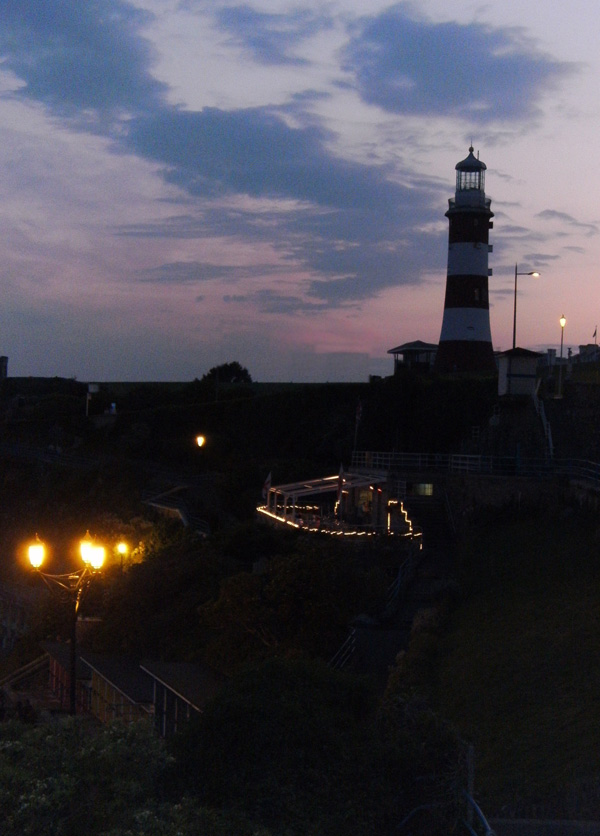
The Hoe at nightfall
That out of the way and the wind too strong to do the mapping dive on HMS Scylla, I tagged along on a shore dive at Bovisands Harbour, near the edge of the Sound.
We kitted up on the harbour side and then, after an abortive attempt to descend the stairs, walked around to the sloping slipway (an altogether nicer way to get in the water, I thought!).
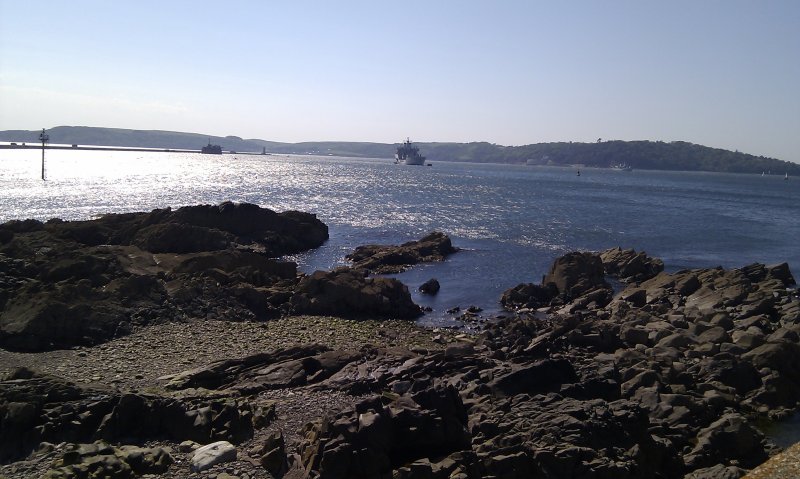
View across the sound from Bovisands Harbour
We bobbed around for a few minutes, fitted our fins and then set off as 3 buddy pairs and an instructor with two divers.
Visibility was surprisingly (to me) poor, but there was plenty of kelp and that was a new experience for me, swimming in lots of weed. The divers under instruction did a a brief exercise and we hovered or knelt on the sea bed as they did and then continued on.
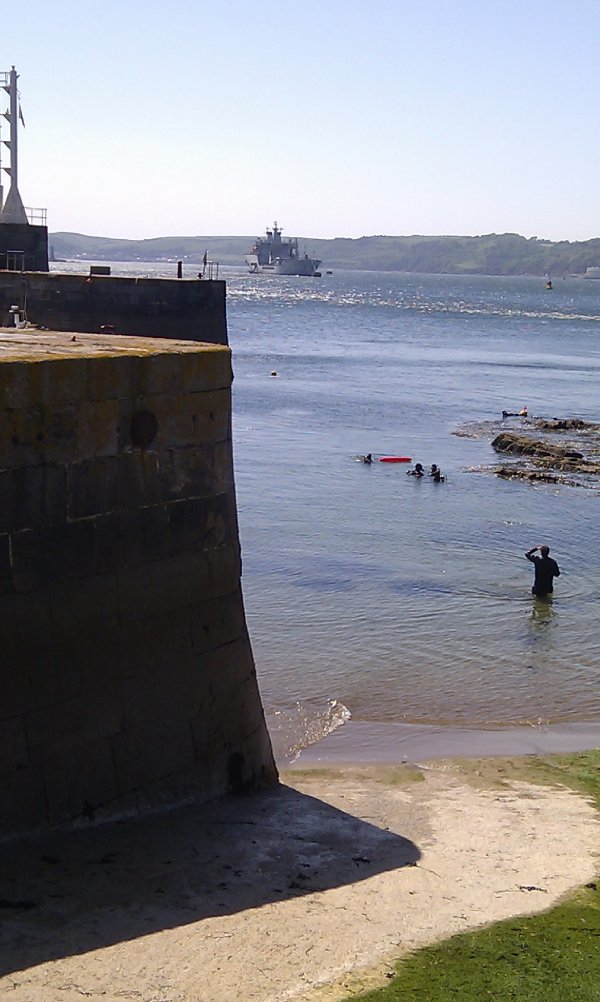
Divers at Bovisands Harbour
After 20 minutes we surfaced (I think this was to do with the Open Water trainees' dive) and rested for a few minutes on the surface before dropping back and exploring outside the harbour wall for a while and then returning to the shore, all in about 40 minutes over the two dives.
I returned to the Barbican Reach and enjoyed a curry at the rather good Himalaya Spice in a side road on the Barbican and then watched some TV before retiring with hopes of getting a couple of my wreck dives in.
Sunday was an early start, but Rob at the Barbican Reach ungrudgingly provided a delicious cooked breakfast for me at 7AM and I was back at the Dive Centre by 8 for ropes off to the Glen Strathallen at 9.
Graham showed me how to lay a line around some posts at the Dive Centre and then got me to do it, which was very straightforward and then we set off on the rib.
I warned them on the way out that I'd only dived from a rib once and couldn't remember how to get back on (Getting off had stuck in my mind, as I think it's rather cool to roll backwards into the water).
They explained the procedure (Remove weights, pass to someone on the boat, remove BCD and tank and pass to someone on boat, pull yourself aboard and then we were rolling into the sea.
There's precious little to see on the Glen Strathallen, not least when vis is only 3-4m, so finding something to lay the line on was a bit of a challenge, but it went OK and Graham soon professed himself happy with my attempts.
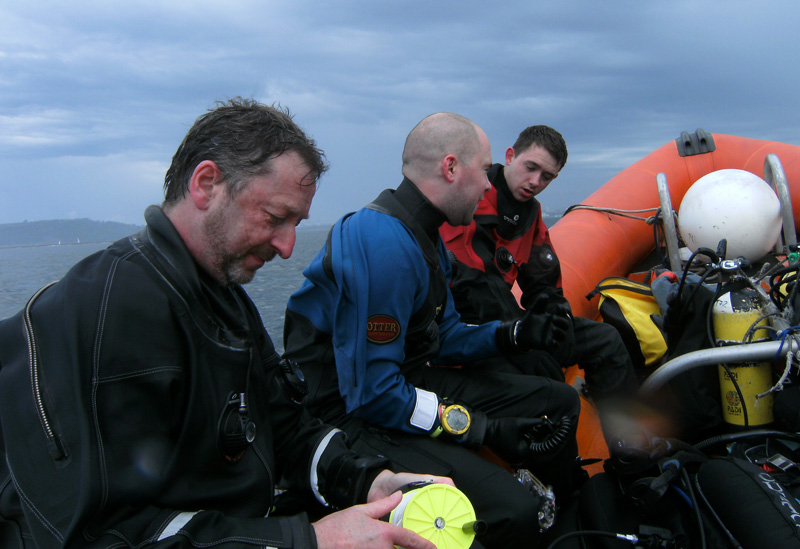
On the way back from the Glen Strathallen, I try to respool my line - Was my mask, maybe, too tight?
We visited the boiler, the only really recognisable bit of the wreck left, and saw the Conger Eel living inside, then it was time to return to the surface, after I'd deployed the DSMB (something I'd only done before in the sea).
I got back aboard the rib with little trouble and we returned to the Dive Centre, leaving most of our kit on the boat, only sending the tanks for a refill.
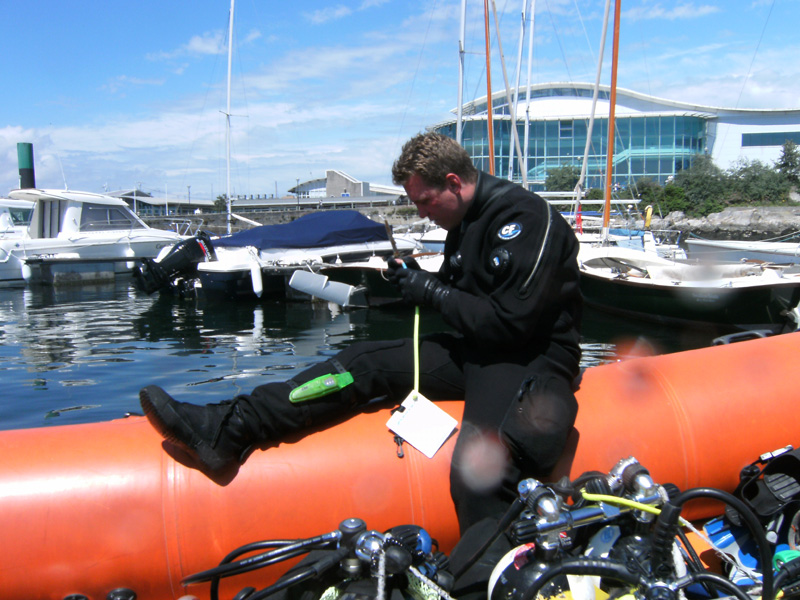
Graham on the Rib
After taking a quick lunch and some surface time, we set off in the rib to HMS Scylla.
The aim of this dive was to map the ship, noting points of interest and possible entries into the ship for the yet to come 'penetration' dive (Diving is the only pursuit I can think of where you can repeatedly say 'penetration' with no-one sniggering!).
Visibility wasn't great, but I really enjoyed the dive on HMS Scylla.
We followed a shotline down to the bridge and then forward to the bow, where Graham pointed out and entry cut on the deck and got me to check it out for access, recording its position and tie-off points, hazards, etc on my slate.
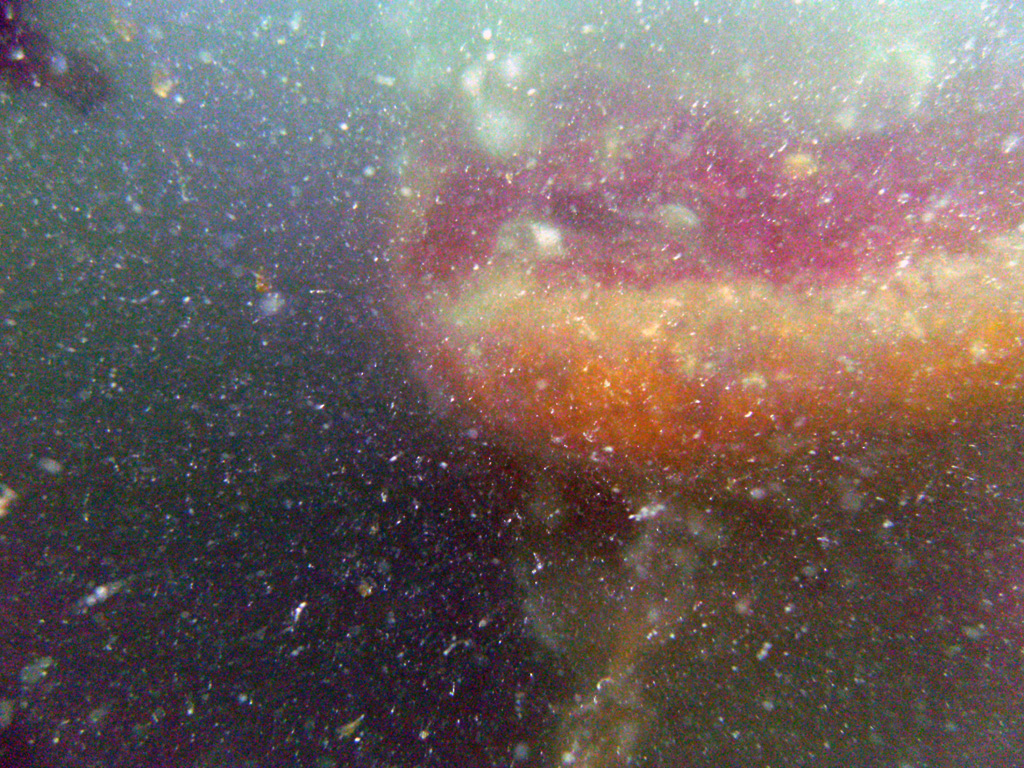
The bow of HMS Scylla appears from the gloom
We then swam over the side of the ship and along the port side, looking at, and recording, entry points as we went. With lots of Algae, it was hard to keep track of where we were on the ship and I became convinced we had swam up the side of the superstructure.
I was a bit confused by a flat expanse of deck, which, even when we reached the roofless shell of what I realised was the helicopter hangar, I failed to realise was the flight deck at the stern.
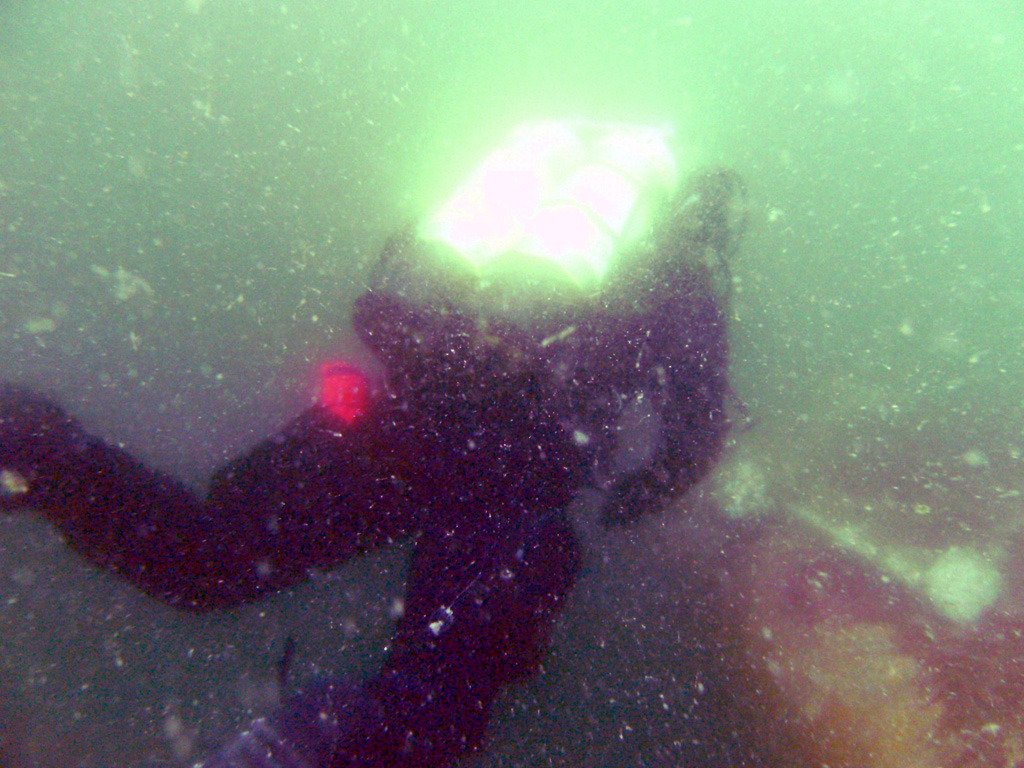
Graham approaches the bow
We swam up out of the hangar and over what remains of the superstructure (and over the hole where the 'funnel' used to be - It was removed before sinking - which didn't look a good place to enter!).
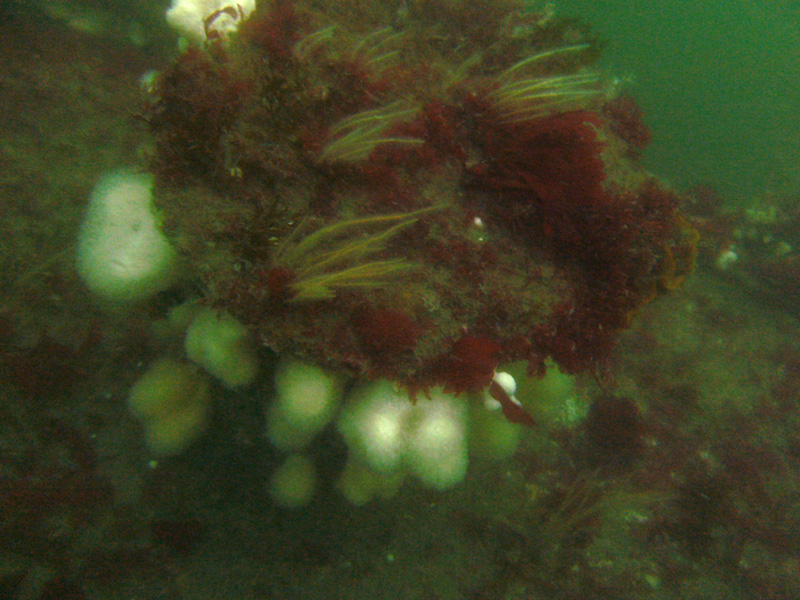
HMS Scylla has worked well as an artificial reef and is full of life.
Finally we made it back to the top of the bridge and Graham went inside. I wasn't sure I was to follow, but he indicated I should so, timing my entry to avoid fighting the surge, I dropped in and was looking out of the ship's windows.
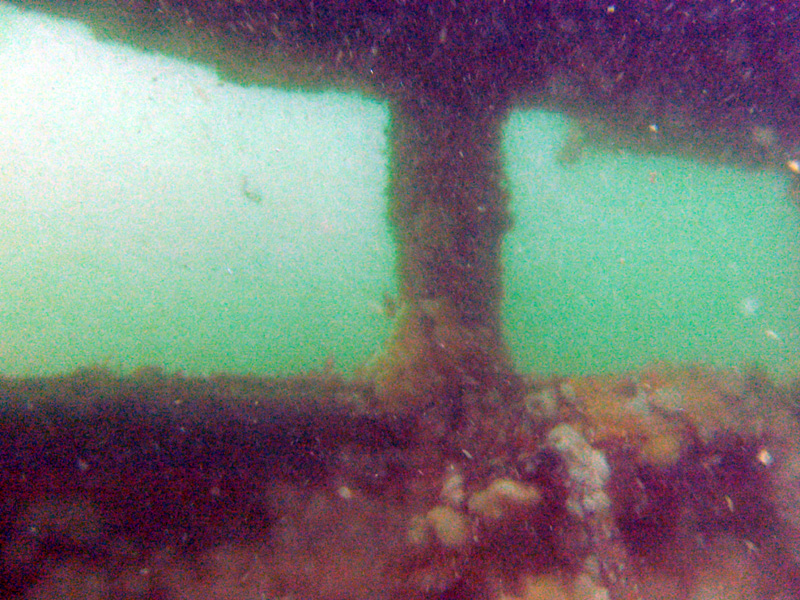
The 'view; from the bridge of HMS Scylla
Some other divers with us had a quick go to and then we made our way up the shotline and reboarded the rib.
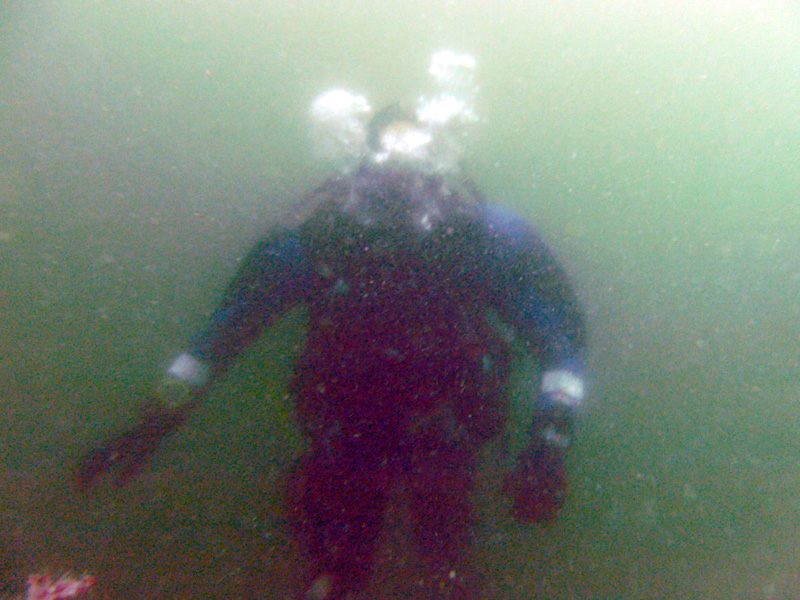
A fellow diver - This is about as clear as it got
Back at the Dive Centre, Graham had a chuckle at my cursory map, but I had located 2 of the 3 entries we visited correctly (I had one on top of the superstructure, instead of on the flight deck!) and had identified some tie off points and hazards on each.
I'd had a great couple of days, but still need to go back to Plymouth to do the final dive of the course, in which I will actually enter the Scylla.
I'm certainly looking forward to the experience, but it did look quite dark in there!
Read some more of my diving experiences, by clicking the icons below.


